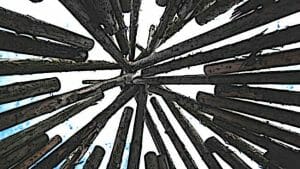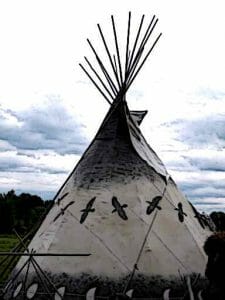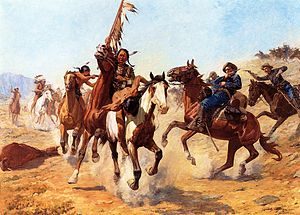Wigwams
Introduction
Wigwams are a specific type of dwellings used by the Native American tribes. Such houses were mostly used by the Native Indians living in the Northeast regions of the modern-day United States. These weren’t permanent dwellings and were rather used as temporary shelters.
1) Structure
The basic structure comprises of arched poles, typically made of wood. A skeleton formed by conjoining these poles was then covered up using a variety of materials.
Native Indians would use animal hides, blankets, grass, brush, bark and reeds in covering up the basic pole structure. The dome-shaped wigwams were usually 8 to 10 feet tall. In their width, they were about 12 – 14 feet. This provided ample space for Native Indian families to live inside the wigwams.
2) Construction
A circular area of 12 to 14 feet was designated and marked on the ground. Nearly 15 to 20 holes were then dug along the perimeter of this circle. Long branches of flexible trees were placed in these holes and then arched to join together at the top. This created the dome-shaped arched roof of the wigwam.
Next, the Indian tribes used strong bark fibers to lash together the poles. Then sheets of birch were tied to the poles to create a basic roof. Once the roof was in place, the Indians would add grass, mats, reed, blankets, hides and other materials for additional layers.
3) Naming of Wigwams
Wigwam is a word from the language of the Abenaki tribe. In the language of the tribe, it simply means ‘house’. The word ‘wigwam’ was used by many Native Indian tribes in the Northeast woodlands to describe their homes.
Houses of similar shapes and style were also constructed by tribes in other regions of North America. In these regions, the dwellings were named differently. For instance, the Wampanoag tribe used the term ‘Wetu’ to describe their wigwam-shaped dwellings. Similarly, the terms ‘wickiup’ and ‘birchbark house’ have also been used to denote native Indian homes shaped like wigwams.
4) Indian tribes who built Wigwams
Wigwams or dwellings that were similarly shaped were used by a large number of Indian tribes. As mentioned above, such houses were mostly built by Indian tribes in the Northeast woodlands.
The Algonquian tribes who lived in the Great Lakes and East Coast regions used wigwams as their homes. The names of these tribes include the Winnebago, Kickapoo, Wampanoag, Pequot, Sauk, Fox, Abenaki, Shawnee, Ojibwe and Otoe.
The use of wigwams suited the tribes who indulged in both hunting and farming. Such tribes used the semi-permanent wigwams seasonally. During the hunting season, these tribes would move to the hunting grounds. When the farming season arrived, they would come back to the farming lands where they had their wigwams.
5) Inside a wigwam
Inside the wigwam, the fire hearth had a central position. Directly above the hearth, a small opening was kept to let the smoke escape. The floor was covered with animal hides. Platforms were used as beds for sleeping during the night and as seat berths during the day. The space under the berths was used as a storage area.
Learn more Amazing things about Wigwams at Wikipedia
We hope you enjoyed this article on Wigwams and the Native American Indians – If you would like to learn more about the Native American Indians and how they lived in homes such as wigwams please see the links in this article or at the bottom of the page.
- Native America
- Famous Native Americans
- Native American Art
- Native American Clothing
- Native American Definition
- Native American Facts
- Native American Food
- Native American Gods
- Native American History
- Native American Houses
- Native American Indians Lives
- Native American Life
- Native American Names
- Native American People
- Native American People Roles in Society
- Native American Symbols
- Native American Timeline
- Native American Tribes
- Native American Warriors
- Native American Wars
- Symbol for Strength
- Totem Poles
- Who were the Native American people?
- Why were they called Red Indians?
- Wigwams



